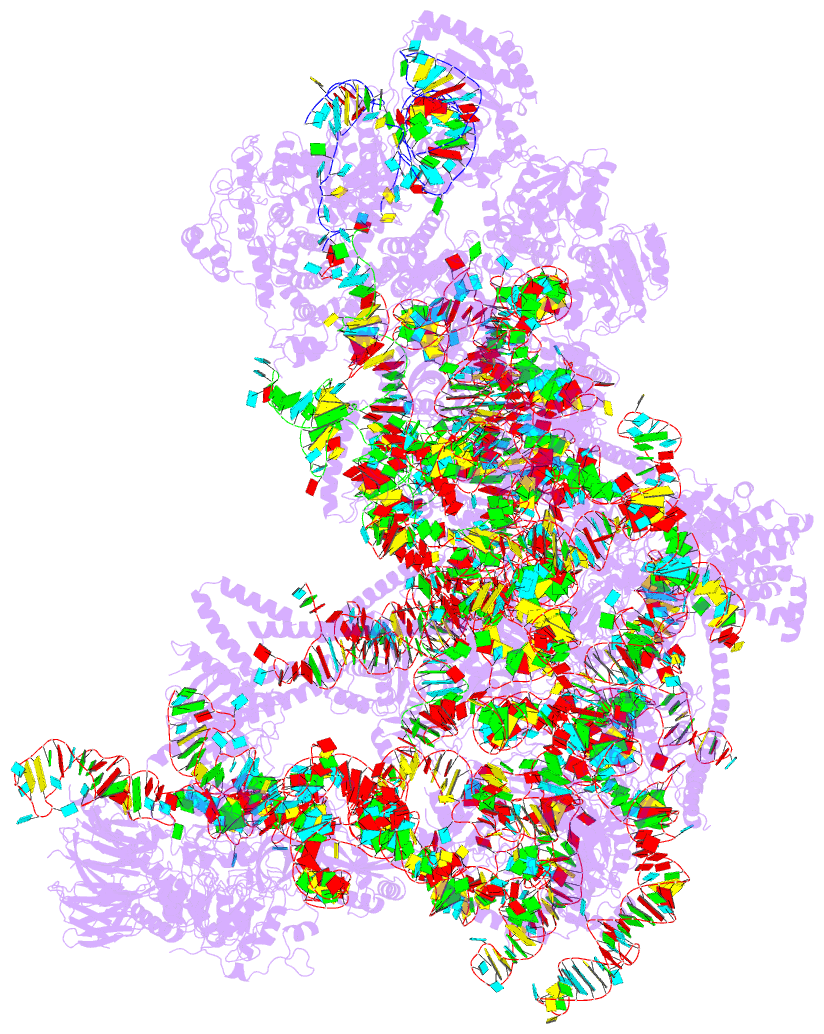Summary information and primary citation
- PDB-id
- 6c0f; DSSR-derived features in text and JSON formats
- Class
- ribosome
- Method
- cryo-EM (3.7 Å)
- Summary
- Yeast nucleolar pre-60s ribosomal subunit (state 2)
- Reference
- Sanghai ZA, Miller L, Molloy KR, Barandun J, Hunziker M, Chaker-Margot M, Wang J, Chait BT, Klinge S (2018): "Modular assembly of the nucleolar pre-60S ribosomal subunit." Nature, 556, 126-129. doi: 10.1038/nature26156.
- Abstract
- Early co-transcriptional events of eukaryotic ribosome assembly result in the formation of precursors of the small (40S) and large (60S) ribosomal subunits1. A multitude of transient assembly factors regulate and chaperone the systematic folding of pre-ribosomal RNA subdomains. However, due to limited structural information, the role of these factors during early nucleolar 60S assembly is not fully understood. Here we have determined cryo-EM reconstructions of the nucleolar pre-60S ribosomal subunit in different conformational states at resolutions up to 3.4 Å. These reconstructions reveal how steric hindrance and molecular mimicry are used to prevent both premature folding states and binding of later factors. This is accomplished by the concerted activity of 21 ribosome assembly factors that stabilize and remodel pre-ribosomal RNA and ribosomal proteins. Among these factors, three Brix-domain proteins and their binding partners form a ring-like structure at rRNA domain boundaries to support the architecture of the maturing particle. Mutually exclusive conformations of these pre-60S particles suggest that the formation of the polypeptide exit tunnel is achieved through different folding pathways during subsequent stages of ribosome assembly. These structures rationalize previous genetic and biochemical data and highlight the mechanisms driving eukaryotic ribosome assembly in a unidirectional manner.





